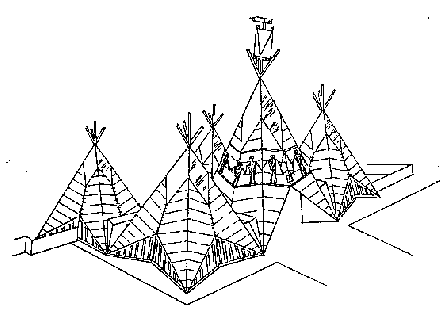- FEATURES
The Indian Pavilion is an integrated display of the history,
lore, crafts and tribal rights of the American Indian. This authentic
American Indian Exposition depicts the historical significance
of Indian life and its contribution to the heritage of America.
Located in the Lake Amusement Area, it includes five structures
and a Ceremonial Circle where Indian dances and activities are
demonstrated.
Exhibits for the Indian Exposition change constantly to embrace
many periods. Indian art is represented by works of early times
loaned for the exhibit by the Bureau of Indian Affairs and other
United States sources. Additional artwork, bows and arrows, beaded
saddles and displays of early handicrafts, originally in the
possession of Spain and other foreign governments, and not seen
in the United States for at least two centuries, have been loaned
for the exhibit.
One of the Northwest Indian delicacies to be served in the
Pavilion is salmon, smoked on the grounds by various Indian tribes.
Among the exciting events shown for the first time off the Reservation
are a live snake dance, the hot coals dance and other rites.
This is the first time that the American Indians have had
an organized exhibit at a World's Fair. The National American
Indian Youth Committee of Arrow, Incorporated, is a non-profit
organization working on behalf of American Indians in the fields
of health, education, housing, arts and crafts, the development
of resources, and seeks scholarship funds for the education of
Indian tribes. Arrow, Incorporated was organized in 1949 by Will
Rogers, Jr.
|

